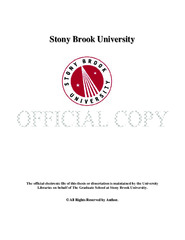| dc.identifier.uri | https://hdl.handle.net/11401/79028 | |
| dcterms.abstract | The Maximum Entropy Principle (Max Ent) was introduced by E.T. Jaynes in 1957 as a method to infer the most likely probability distribution given some known partial information about data. This principle was given a theoretical grounding by Shore and Johnson in 1980, who framed it in terms of self-consistency conditions on the laws of probability themselves. They showed how the concept of entropy and its maximization is not limited to equilibrium thermal systems. More recently, it has been extended to non-thermal systems at equilibrium as well as dynamical systems.
After a brief overview of the principle itself, and its dynamical form (known as Maximum Caliber principle, or Max Cal) I will discuss some applications of it to systems of physical and biological relevance.
In the first part of the dissertation I will show how it is possible to apply Max Ent to the protein’s sequence space, in order to determine the features of the time scales of protein evolution, adaptation to different environment and the action of other protein machinery known as chaperones. Making use of the largely accepted idea that proteins physical features are what determines the fitness of a cell, I will show how it is possible to relate the speed of adaptation and evolution to features like a proteins stability and its tendency to aggregate, as well as the concentration of chaperones.
In the second part, I will show an application of Max Cal to non-equilibrium, steady state systems, which is of pivotal importance since it represents a class of systems which is among the most studied in the field of non-equilibrium statistical mechanics. I will show how the proper set of constraints resolves some doubts regarding the application of Max Cal to systems which exhibit specific symmetries under space reflection and time reversal.
I will conclude the dissertation by showing that Max Cal can be used in a more systematic fashion when some conservation law applies to dynamical quantities, like linear and angular momentum; in such cases the choice of constraints is less arbitrary than in others. | |
| dcterms.available | 2021-07-01 | |
| dcterms.contributor | Advisor: Dill, Ken A. | |
| dcterms.contributor | Committee members: Dawber, Matthew; Balazsi, Gabor; Fernandez Serra, Maria Victoria; Strey, Helmut | |
| dcterms.creator | Agozzino, Luca | |
| dcterms.date | 2020 | |
| dcterms.dateAccepted | 2021-03-17T15:48:54Z | |
| dcterms.description | Department of Physics and Astronomy | |
| dcterms.description | Dissertation | |
| dcterms.extent | 101 pages | |
| dcterms.format | application/pdf | |
| dcterms.issued | 2020-05-01 | |
| dcterms.language | en | |
| dcterms.provenance | Submitted by Dana Reijerkerk (dana.reijerkerk@stonybrook.edu) on 2021-03-17T15:48:53Z
No. of bitstreams: 1
Agozzino_grad.sunysb_0771E_14510.pdf: 5452460 bytes, checksum: af5283a04d4c0921275d616801cb9537 (MD5) | |
| dcterms.provenance | Made available in DSpace on 2021-03-17T15:48:54Z (GMT). No. of bitstreams: 1
Agozzino_grad.sunysb_0771E_14510.pdf: 5452460 bytes, checksum: af5283a04d4c0921275d616801cb9537 (MD5)
Previous issue date: 2020 | |
| dcterms.provenance | Made available in DSpace on 2021-11-23T21:14:24Z (GMT). No. of bitstreams: 2
license.txt: 2349 bytes, checksum: 6814eec9a3f3f30924c67dbf996f2d5d (MD5)
Agozzino_grad.sunysb_0771E_14510.pdf: 5452460 bytes, checksum: af5283a04d4c0921275d616801cb9537 (MD5) | |
| dcterms.publisher | Stony Brook University | |
| dcterms.title | Variational Principles in Statistical Mechanics and their Application in Biology and Evolution | |
| dcterms.type | Text | |

